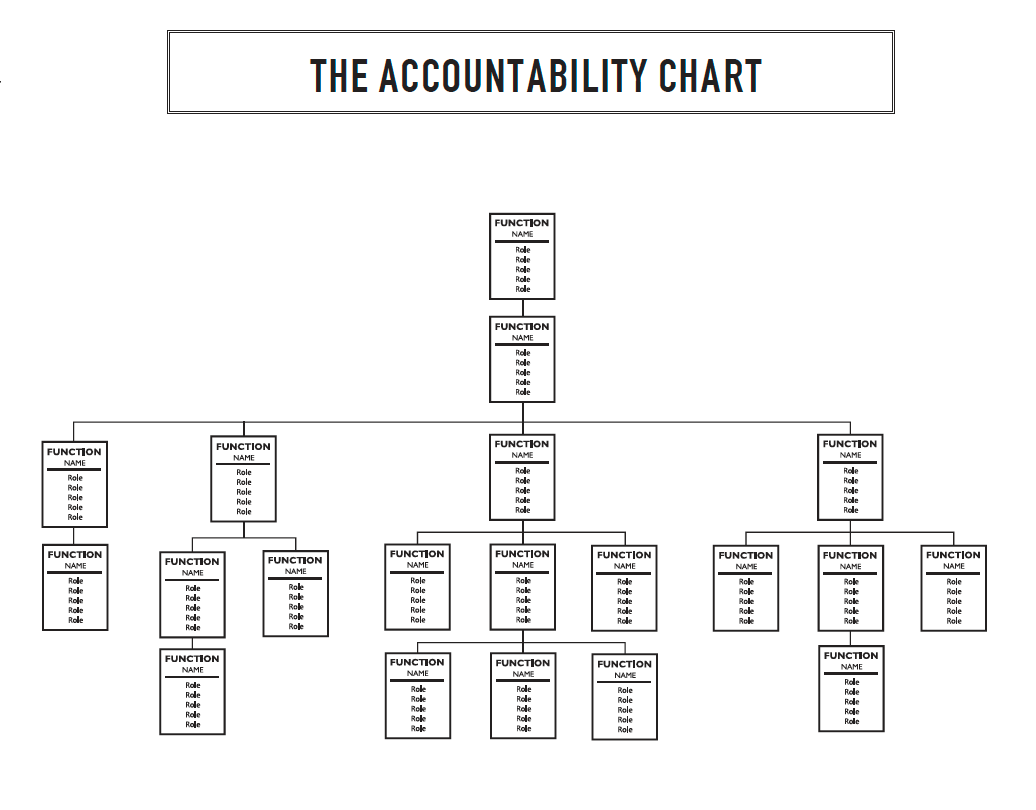EOS - Shared By All
The EOS Rollout and State of the Company
Why is the Rollout important?
Alignment drives efficiency.
The Rollout is the essential first step in driving alignment across the organization. The end goal is to get every employee, top to bottom, 100% aligned on where the business is going and how it is going to get there.
The Marketing Rule of 7 has been around since the 1930s. The concept is simple. People will not notice your message the first time until they hear it 7 times. When communicating the vision to employees, prepare to repeat it over and over.
The first quarter is known as the Rollout. Every quarter hereafter, the message will be repeated in a quarterly “State of the Company.”
“If you want people to know the company vision. You actually have to tell them.”
Gino Wickman, co-founder of EOS
Choose Your Rollout Approach
The primary purpose is to get every employee 100% aligned on where the business is going and how it is going to get there. In communicating the vision, the leadership also has tremendous opportunity to create excitement, to build desire for people to contribute and to demonstrate executive unity and commitment.
The rollout is a big opportunity!
There are several approaches that can be used to rollout EOS across the business:
A single all-hands meeting
Department leaders communicate to each of their departments
A road show to the different locations
One or multiple virtual sessions
Ultimately, the most important element is that every employee hears the vision and progress towards that vision every quarter.
Bring the Energy
You are laying out your passion for the business (Core Focus), your Big Hairy Audacious Goal (10-Year Target), your core principles (Core Values) and your 3-Year Picture. Don’t undermine it with a boring presentation.
A few ideas:
Get yourself hyped. The more energy you represent, the more people will feed off it.
Show conviction. If you don’t believe it, your employees won’t either.
Give everyone something to look at. Hand out a copy of the V/TO or present the content as a slide show.
Change the voices. Have different leadership team members explain different aspects of the vision. Different voices will increase attention and show team commitment.
Leave time for Q&A. If no questions pop out, think of a few points to elaborate about why you are excited for the future.
For instance, “Any questions?” Everyone stares back with no questions because they are nervous or overwhelmed. So, keep going with something like, “One of the things that I am particularly excited about is…”
Typically, there are ambitious concepts in the 3-Year Picture and your employees will find your elaboration interesting. It also gives people a few minutes to formulate their question in their head.
Make EOS Books Available
Some employees will want to better understand what EOS is all about. Concepts like L10 meetings, Rocks and the V/TO are unique language that will need to be taught and learned. Help the employees that want to learn faster to get more proficient in EOS.
The EOS library has three books that can be used to help your self-motivated employees:
Traction (also available in Spanish) - The original book written in 2011. In many ways, this is the EOS textbook.
Get a Grip - The second book written in 2012. It is consistent with EOS, but it is told as a story about a company that is transformed by using EOS. This is great for anyone wanting to anticipate what to expect rather than learning how EOS works.
What the Heck is EOS (also available in Spanish) - Written in 2018, this book was specifically created to help companies rollout EOS. It is an abridged version of EOS to appeal to a broad employee base.
Generally, What the Heck is EOS is the book used to share with the masses. Bulk discounts can be obtained for each of the books here: https://www.eosworldwide.com/traction-library-bulk-order
Note: Some companies like to make the books available before the meeting to help people ask better questions in the meeting.
Official best practice: Make books available during the meeting.
What To Share - The Starting Point
Trust is built with transparency.
A great place to start the meeting is why EOS was brought into the organization. Maybe it was because a ceiling was being hit. Maybe it was because greater process was needed to take the business to the next level. Maybe it was because it was a recommendation from a friend. Maybe it was all of these things.
Often, when the leader shares some of the concerns and things they were seeing in the business, the employees will start nodding as they saw those same things. The more transparent, the better.
Generally, employees seem to agree the organization has not been operating as a finely tuned machine and are supportive of efforts to improve things.
What to Share Next - A Short EOS Summary
Once you acknowledge the reason for EOS, the audience will often be curious what EOS actually is. A very simple explanation about what EOS can be:
The Entrepreneurial Operating System, or EOS, is a complete system of 20 tools to help the business run more effectively.
The big EOS discovery was that over 100 problems typically plaguing small and mid-sized businesses can be handled by strengthening six areas of the business.
These six areas are the Six Key Components, as listed in the EOS model.
The 20 tools used by EOS strengthen these six areas.
These tools will be rolled out across the business over the next several months and quarters.
If anyone wants to get ahead of the curve and learn more about EOS, any of the books listed above are a great resource to use.
What to Share Next - The V/TO
Once the table is set with a little background, the employees should be ready for the main event. All the content in the Vision / Traction Organizer (V/TO). Simply go in order:
Core Values - Give The Speech and reinforce the company’s commitment to these values.
Core Focus - Speak to the Passion and the Niche, and then elaborate with why this is the leadership team’s passion.
10-Year Target - Acknowledge that the 10-Year Target is ambitious, but that’s what you were going for.
———
Marketing Strategy - Get everyone to understand the center of the target market bullseye and lay out the 3 Uniques.
———
3-Year Picture - Explain this in a way that everyone can picture it.
Make the point: “If we can get to this Picture in 3 years, we are on-track for the 10 Year Target!”
1-Year Plan - Explain this is where we bring the Vision down to the ground with the 3-7 things that need to get done in the next 12 months.
Make the point: “If we can get these things done this year, we are on-track to hit the 3-Year Picture.”
Rocks - Explain these are 90 day goals and they are the 3-7 things that are the most important for the company to advance.
Make the point: “If we can get these things done this quarter, we are on track for the 1-Year Plan.”
———
Tie things together - “If we get our Rocks done, we will be on track for the 1-Year Plan, which puts us on track for the 3-Year Picture, which puts us on track for that amazing 10-Year Picture. If we execute this quarter, we are on our way!”
Issues - Let the team see the things holding you back. Help them see that the company will be tackling in future quarters by design. It increases transparency and understanding.
Allowing different leaders to communicate different aspects of the V/TO can help strengthen buy-in across the team. This vision is not just the product of one person, but the entire leadership team.
Wrap It Up - The Accountability Chart
After the big picture is shared, the employee base will often be a bit overwhelmed. Too often, they have been solely focused on the work that needs to be done, so laying out what the business is, where it is going and how it is going to get there is a lot. This can cause questions to be held back in the big meeting. Each leadership team member should be ready to answer specific questions in upcoming meetings.
After the V/TO, many organizations will share:
The Leadership Team Accountability Chart - “We believe this structure is the most effective way to get us where we want to go. Over the next several weeks, we will be sharing the structure across the organization.” These departmental discussions can be covered in future L10 meetings.
For organizations with 25 employees or less, sharing the entire Accountability Chart is a good option.
For organizations with over 25 employees, the entire Accountability Chart may be too much.
L10 Meetings, Scorecards and Rocks are coming - “Over the next several weeks, if they haven’t started already, we will be introducing several EOS tools across the organizations. We want everyone in the organization to be aligned and connected to our vision. We will all be working closer together with improved scorecards, rocks and L10 meetings to tackle our issues faster and more effectively.” These tools will cascade over the quarter.
Then, open it up for questions.
Rolling Out EOS to the Next Level
Once the team learns the game plan, EOS should start to be rolled out to the next level of leaders. This will drive alignment, discipline, focus and accountability into a much bigger set of people. While the leadership team achieved substantial alignment in the first 60 days with EOS, the work done will now drive alignment to 5x more people by cascading to the next level.
Cascade just one level down in the first quarter after rollout and see dramatic impact.
This EOS Rollout Process can help provide a structure for your rollout (click on link):
Every 90 Days - The “State of the Company”
Hereafter, the quarterly meeting becomes a “State of the Company” update and follows a slightly different structure with the same content:
Where we’ve been:
Remind everyone about the 1-Year Plan
Share the previous quarter’s Company Rocks and show performance (inclusive of measurables)
Provide your opinion about the previous quarter’s performance
Where we are:
Update on the status of any big projects underway
Recognize people and departments for achieving at a high level
Recognize people exhibiting Core Values
Where we are going:
Rollout time, back to the V/TO. Share the Core Values (the Speech!), the Core Focus, the 10-Year Target, the Marketing Strategy, the 3-Year Picture, the 1-Year Plan (for the 2nd time) and lay out the next quarter’s Company Rocks.
Bring the energy!
People do not hear things the first time until they hear it the seventh time. So, while sharing the V/TO every quarter may feel repetitive, you should find a highly receptive audience.
The Key to Success - Consistency
The secret to success is not the presentation. It is consistency. Each quarter, the employees will see:
Inspirational aspirations - who the company is, what the company wants to become and how the company is going to get there.
Leadership by example - Each quarter of progress demonstrates discipline, focus, management alignment and leadership unity.
Building something greater than any individual - With a 10-Year Target, each employee can connect with something that will be around for a while.
Each quarter that the leadership team forgets or doesn’t get around to providing the updates undermines these qualities. Consistency is essential.











